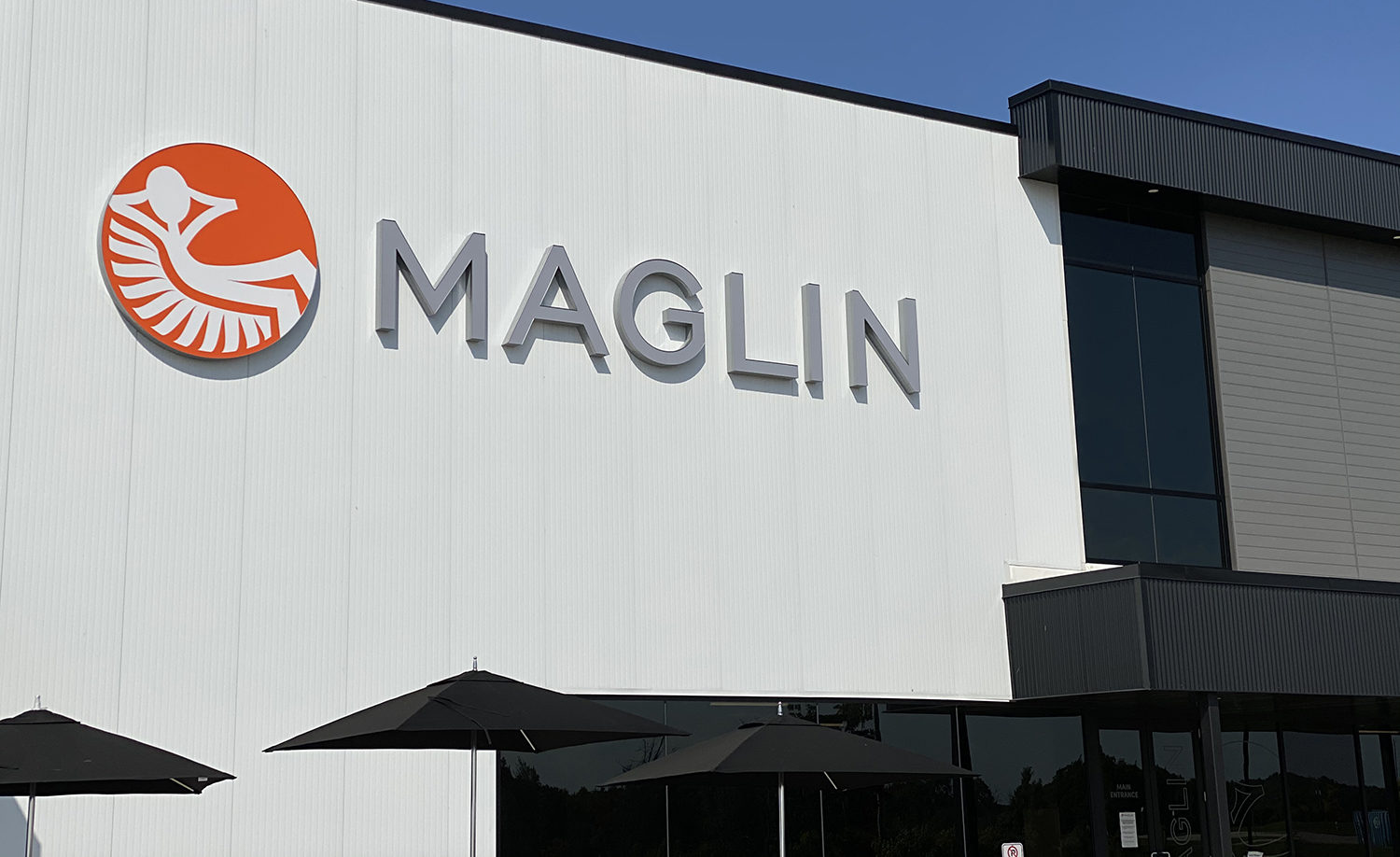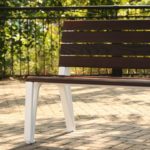Care & Maintenance
Product Information
Maglin Site Furniture manufactures its products to the highest standards of excellence, design integrity, durability and dependability. Unfortunately, some things are out of our control; such as misuse, vandalism or improper installation. Should there be any of these occurrences; Maglin makes the following suggestions to help maintain and return the product to its original beauty.
Surface Mount and Free-Standing Product
All surface mount product is to be anchored to the intended surface with the foot holes using the recommended anchor hardware. Free-standing product can be modified to be surface mount. If product is intended to be movable, please advise your Maglin sales representative at the time of quote/order.
Stackable Chairs
Chair glides and bumpers should be inspected periodically for wear and replaced as needed. Replacements can be ordered from Maglin. Stacking chairs are designed to be set in place, not thrown, or dragged, especially on uneven surfaces such as paving stones. Throwing chairs can result in damage and is considered “abuse.”
Handling Product
Once product has been received and inspected, proper care should be observed when moving product to the installation location, or the temporary area product may be kept until ready to be moved to the site. Product should never be dragged; lift up and down only. Powder coat is highly durable, however, is susceptible to damage from hard unintended hits or contact. Care must be taken to ensure the product is moved safely to the site of installation. Damage occurring after inspection will not be covered under warranty.
Product Installation
Maglin products must be installed according to the Maglin Product Installation Instructions. Damage occurring due to improper installation will not be covered under warranty.
Materials, Cleaning, Care and Maintenance
We suggest regular inspections to identify any loose or missing hardware. These should be tightened or replaced immediately. If any part is found to be structurally cracked or broken it is recommended that the product be taken out of service until the appropriate repairs can be made. Contact Maglin for replacement parts. Should dirt from the environment build-up on any surface, wipe with a soft cloth and mild detergent. Abrasive and commercial cleaners, brushes or coarse steel wool should never be used on any surface.
Metal
All Maglin metal products are undercoated and powdercoated. The Maglin metal-finishing system has been designed and developed through the input of coating experts and more than thirty years of Maglin experience. It sets a standard for coatings and is unsurpassed for public site furniture. If the finish is marred by a sharp object and the steel is exposed, take a fine abrasive sandpaper to the area to improve the adhesion of the primer and touch-up paint.
A quality grade exterior metal primer and topcoat of matching color enamel should then be applied over the prepared surface. Upon request, Maglin can supply metal paint samples for color matching.
An alcohol-based sanitizer (not hand sanitizer, but one made for surfaces) is recommended for disinfecting surfaces. Powder coaters routinely test for full curing in QA via a solvent rub test using methyl ethyl ketone (MEK) which is a significantly more powerful solvent than alcohol. Disinfectant wipes (e.g., Lysol) are an alternative, however, a non-visible area should be tested prior to use.
Pressure washing with a low PSI (1,000 PSI with a 36” distance from the surface) using filtered water and mild detergents work best. Commercial cleaning solutions can remove layers of the finish and should be avoided. Ground water use can result in staining.
HDPE - High Density Polyethylene
Use lukewarm water and soap with a soft cloth, or sponge. We do not recommend any abrasive cleaners, or material, which can scratch or scuff the finish.
Lock Maintenance
To keep locks functioning properly especially in variable climates, the following is recommended. Use of a lock lubricant is advised every six months, especially in colder
climates. Apply the lubricant onto the teeth of the key and insert into the lock and turn back and forth. This will transfer the lubricant from the key onto the lockset. Clean off key after finished.
Depending on frequency of units being emptied, regular tightening of the mounting nut is recommended using a 7/8” wrench. This should be done minimum twice a year. Note: adding Loc-tite is not recommended. Failure to follow recommendations may result in having to purchase new locks.
Thermally Modified Wood
Thermally Modified Ash and Oak wood left untreated is considered maintenance free. Left alone, the material will weather to a natural grey patina. If it is undesirable to have wood remain grey, maintenance coats can be applied periodically using hardwood exterior penetrating oil such as Cutek Extreme with a walnut colortone.
Cutek Extreme clear oil is recommended as after the modification process the material will no longer take moisture from the air. Cutek controls this after penetrating the ash. Checking will occur, however use of Cutek will help to minimize and this does not affect the strength or durability of the material. Some discoloration after oiling in the material may be observed, however, thermal wood tends to have a uniform raw appearance. Cutek oils are designed to gradually fade over time rather than peel off, split or crack as is the case with many conventional film forming coatings. For this reason, the rejuvenation and maintenance of Cutek coated surfaces is a simple, fast, and cost-effective process. Recoat time varies widely according to many factors including the age and porosity of the timber, situation, and exposure to the weather. An indicator that re-application is needed is a water splash test, if the water does not bead it’s time to prep and re-apply. Typically, horizontal exterior smooth surfaces exposed to full weather may require recoating every 6 months to 2 years, while vertical cladding may require maintenance less frequently. The use of varnish or urethane is not recommended and should be avoided.
Ipe Wood
Left alone, Ipe weathers naturally to a silver patina. Cracks and checking in the wood is normal and should be expected as it moves and breathes with the humidity in the air. This is the nature of the material and does not compromise strength or durability. Therefore, stain, varnish, urethane or paint is not recommended for exterior use as any finishing would require constant upkeep depending on climate. Deck Wise Ipe Oil use is recommended if upkeep is desired. There will be color variation in raw Ipe as not all wood is taken from the same tree, this will result in some material being darker in appearance than others.
Weathering of Wood
Graying
Unfinished wood will weather to a natural gray patina.
Checking
During the initial drying process the outside of the wood dries quicker than the interior, which causes differential stresses to develop. The combined effect of these drying stresses in wood often results in the formation of a check or a split. These seasoning characteristics are not problematic; it is important to remember that as wood dries, it becomes stronger. The development of these seasoning characteristics is quite normal.
For Ipe, this will occur if Deckwise Ipe Oil is re-applied or not. For Thermal Wood, Cutek will help limit the amount of checking. Both instances are climate dependent for severity.
Chroma - Surface Refinish
During the service life of Chroma, it is possible that the surface will become scratched after regular use. The matte finish of the material allows it to be refinished if desired. If Chroma needs to be refinished for any reason, the panels may be renewed by sanding with an orbital sander at 10000-12000 RPMs using 3M 360L or 334U grade 240 grit paper.
- If there are deep scratches, first use a coarse sandpaper on the damaged area 150 grit. Move in a circular motion ensuring to sand at least 12” away from the affected area to ensure it is blended out.
- Next, wet the surface by misting it with a bottle of water. Now using the 3M 360L of 334U grade 240 grit paper, place the sander on the surface to wet the paper before turning it on.
- Begin sanding in a circular motion with even pressure and keeping the sander flat until the damage and scratches are fully removed and any marks left by the coarse
sandpaper are removed. - Wipe down the entire surface with a mixture of mild detergent and water using a dry clean cloth.
- Finish by applying Maglin – Countertop Cleaner to help resist oils and stains.
Chroma - Surface Cleaning
regular cleaning of Chroma will help maintain its original look. To clean off any dirt or grease use a soft cloth or sponge and some mild soap and lukewarm water. This will generally be sufficient to restore the surface to its original appearance. Repeat this step twice. The sooner the dirt and grease can be removed, the better. For more difficult stains, dirt or grease surface cleaners such as Fantastik® or Formula 409® also work well. Avoid rubbing dry cloths on the Chroma surface, this may cause scratching. Scrapers or squeegees should never be used. Strong solvents or chemical cleaners should be avoided.
Once the surface has been cleaned, Magic – Countertop Cleaner is recommended for a final finish. This will help resist stains in the future. Novus® No. 1 and Brillianize® plastic cleaners can also be used as alternatives. Both products are specifically designed for use on plastics and help panels to resist finger marking and static.
Graffiti Removal
When graffiti needs to be removed, please follow the suggested recommendations:
Powdercoated Surfaces
Powdercoated surfaces coated with our Anti-Graffiti coating provide a surface that is easier to clean and remove graffiti from when compared to those coated with powdercoat alone. For small areas affected by graffiti we recommend the use of World’s Best Graffiti Safewipes and for larger areas World’s Best Sensitive Surface Remover. Follow each graffiti removers’ specific instructions for best results.
WORLD’S BEST GRAFFITI SAFEWIPES
STEP 1: Unfold and scrunch up towel. Using a circular wiping motion, remove marks in small areas at a time. Turn the towel over with every wipe to keep the area clean.
STEP 2: After removing the mark, immediately wipe the area with a soft DAMP cloth.
WORLD’S BEST SENSITIVE SURFACE GRAFFITI REMOVER
STEP 1: Pour a small quantity of the remover into a small plastic bucket.
STEP 2: Choosing a small area of graffiti, apply the remover to the graffiti using a nylon brush.
STEP 3: Agitate the graffiti with the brush as if you were writing with it. You can use a white soft scourer if suitable or if there is no risk of abrasion.
STEP 4: Wipe the dissolved graffiti away by using a DAMP cloth.
These general guidelines will help provide the most effective results:
- Remove the graffiti as soon as possible
- Remove the cleaner from the coating as soon as it has had time to act
- Make sure that the loosened graffiti is not spread onto clean areas
- Wipe clean with a damp cloth
For powdercoated products that do not have an Anti-Graffiti coating, the same cleaning methods can be applied.
Note that the surfaces may experience a slight reduction in glossiness in areas where graffiti has been removed. Note that black permanent marker is a dye-based product and can permanently mark the coating especially on lighter colors. If cleaned off quickly with either of the two ‘World’s Best’ removers, little or no marking will be visible. Marker left to age can be minimized using the same process but sometimes it cannot be completely removed.
Thermal Wood and Ipe
Wait for paint or marker to dry if graffitiing has recently occurred. Sand affected area and the entire board using an orbital sander and 180 grit sandpaper. The sandpaper should be sufficient to remove all graffiti. Sand remaining boards that have not been graffitied then apply Ipe oil for a uniform appearance.
Alternatively, sand and oil the effected areas only and in 6-12 months the area will patina and begin to match surrounding boards. Applying Ipe oil to all unaffected boards will help initially blend their appearance to the sanded and oiled boards treated for graffiti.
HDPE - High Density Polyethylene
HDPE is a self-lubricating material and therefore not many other materials adhere well to it. A stiff nylon brush combined with World’s Best Transgel can be effective at cleaning within the grooves and crevices of the plastics texture. Care should be taken not to apply too much pressure or scrub too vigorously as it may dull the surface. World’s Best Graffiti Safewipes can also be effective at removing most types of graffiti.


Let's Build Together
Start planning your space with us today and see exactly how the bonds we build with our clients are as strong and lasting as the furniture we stand behind.











